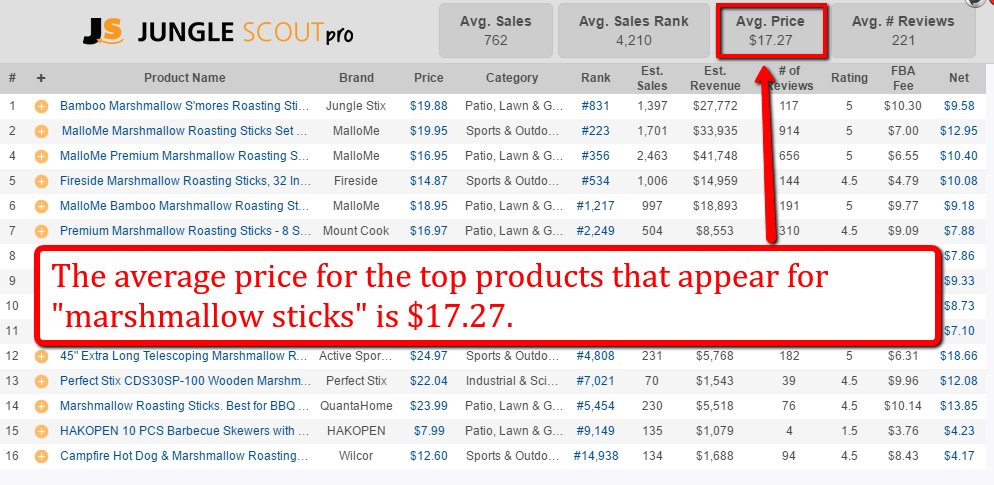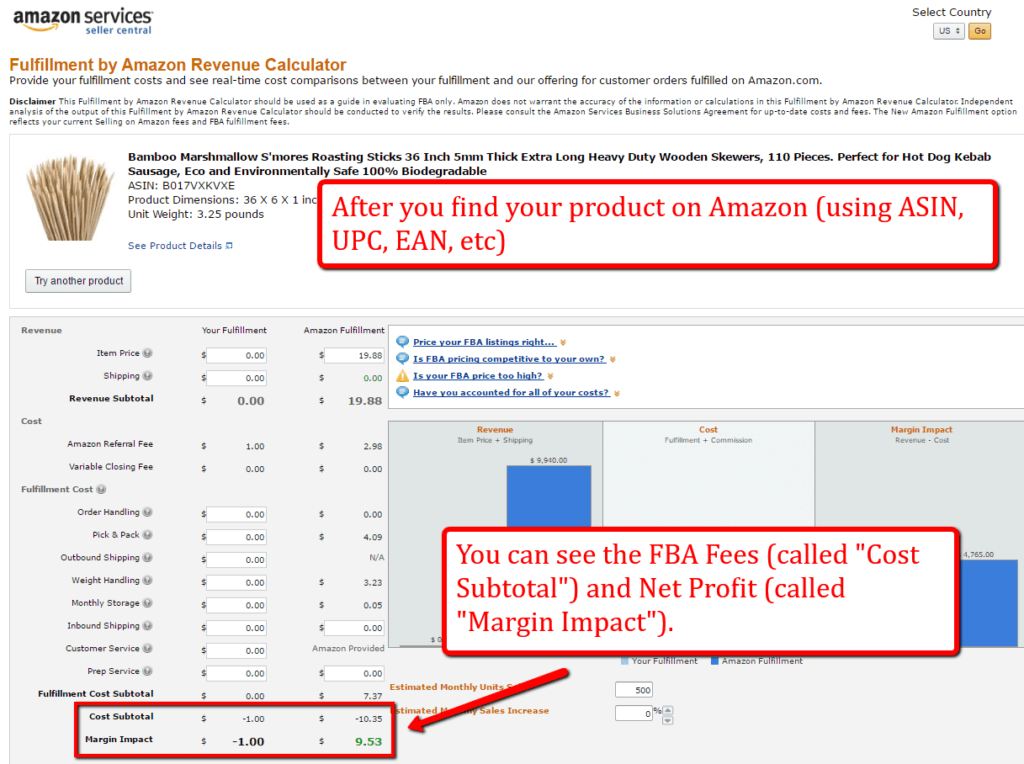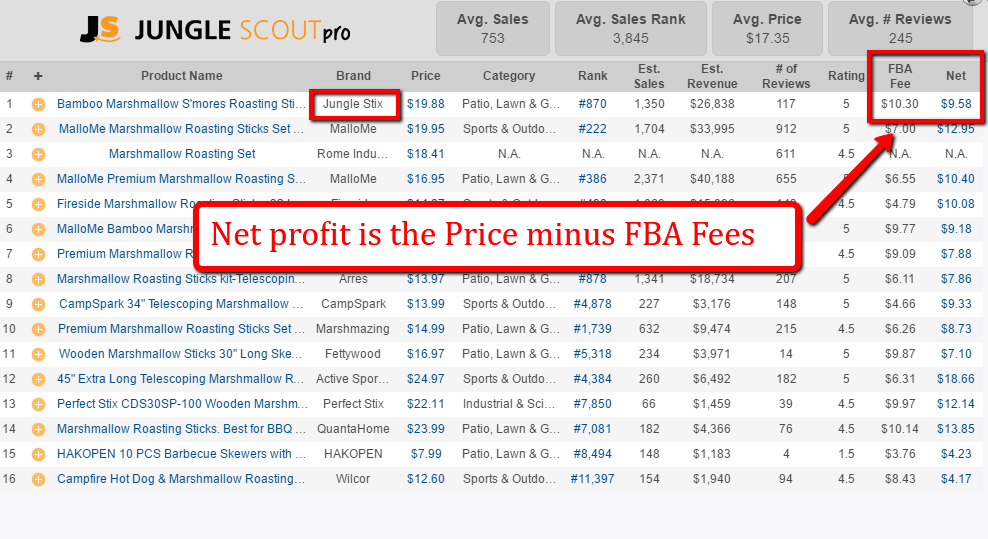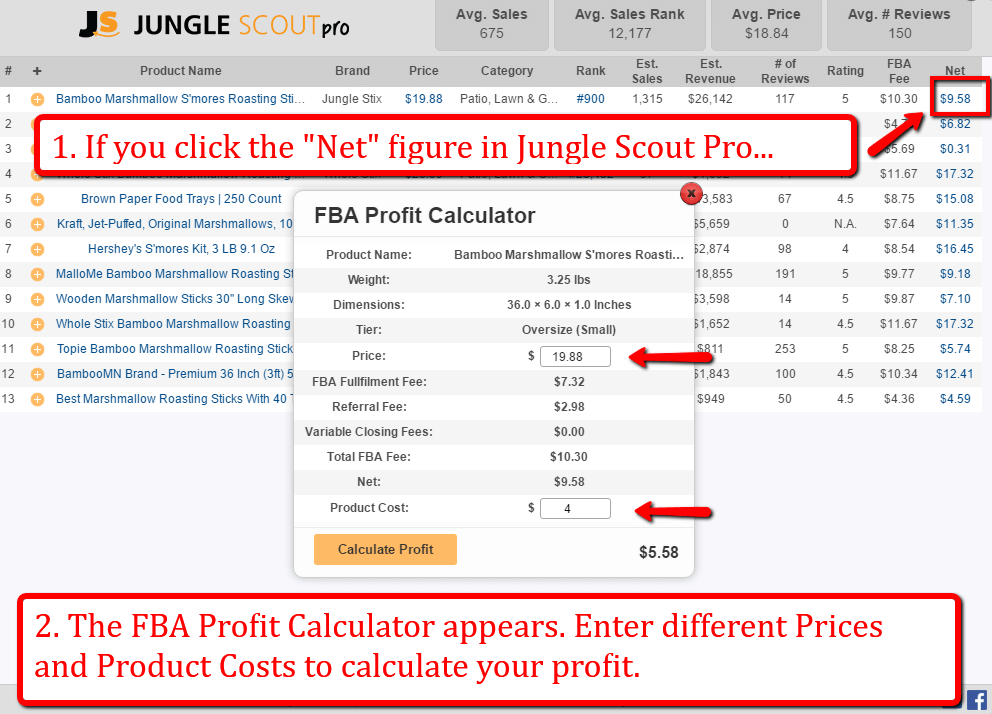Blog: The FBA Profit Calculator: Your Secret To Success on Amazon
The FBA Profit Calculator: Your Secret To Success on Amazon
In product research videos, people will often reference the demand (ie 3000 units sold per month for the main keyword), and competition (ie a few of those in the top 10 with less than 50 or 75 reviews). The often neglected, and most important aspect of the product research is the profit per unit. Like the great rapper DJ Quik once noted, “If it don’t make dollars, it don’t make sense.” Hear hear! There are several ways to access and use an FBA profit calculator to help ensure that you are profitable with each sale, and I will review two of these methods.
In this post, I will cover the steps you need to take to calculate an accurate profit per unit. Once you do so, you will be able to validate the viability of a product, and if it will yield the profits that you need in order to move forward with launching the product. I have also included a spreadsheet so you can plug in your specific figures to make the calculations easier for you.
For the purposes of this exercise, let’s assume we don’t have all of the exact details for the product, but we are getting rough estimates to help us figure out whether the product can meet some basic profitability metrics. If it can be profitable, then we can pursue this further in the product research process.
Retail Price:
It is easiest to start with the revenue figure, so we can get an estimate of how much a customer will be paying for the product. You can fine-tune your pricing strategy with split testing down the road, but at the outset, it’s easiest to just take the average selling price of your competitors.
In order to do this, you can just eyeball the price point for different products, or if you have the Jungle Scout extension, you can be more precise and use the Average Price. This is what the average price looks like for “marshmallow sticks”:


Expenses:
The necessary evil, the pied piper, the dues paid to Uncle Sam (or should we call him Uncle Jeff…Bezos): the FBA Fees. These FBA Fees are what we pay in order to get our products listed on Amazon, have the benefits of pick, pack, ship, customer service, and more.
Let’s start by reviewing what each of these costs are, line-by-line:
- Amazon Referral Fee: This is essentially the cost of having an active listing on Amazon, hence they “refer” customers to you. The fee is generally a percentage of the retail cost (differing by category). You can see the details for how Amazon calculates the fees at this page.
- Pick & Pack: The cost of getting your item from the warehouses, packing it (including the packing materials). This is basically covering Amazon's labor costs in their warehouses.
- Weight Handling: This is the shipping cost to get the product to your customer. It is calculated by the product weight. When they advertise “Free 2 Day Prime Shipping” for any Prime and FBA product, guess who pays for it? Yup, you do as the seller.
- Monthly Storage: Pretty self-explanatory, calculated in cubic volume for storage on a per-month basis.
- Prep Service: If you paid for Amazon to apply labels like the UPC codes, it would be $0.30 per product.
How do you estimate what these costs are for a given product? Suppose you are interested in competing against Jungle Stix and want to sell marshmallow sticks. You would simply find the ASIN, UPC, or EAN of a comparable product, and plug it in to Amazon's FBA Revenue Calculator.
Once Amazon identifies the product, you can see what the individual fees are, what the overall fees are, and what the “net profit” is.
This is a break down of what the Revenue Calculator shows for Jungle Stix:

It is a total of $10.35 in Amazon fees, which they subtract from the Item Price that I entered, which is currently $19.88. This leaves $9.53 in margin, which they term “Margin Impact”.
If you have the Jungle Scout Pro Extension, you can pull all of this information up with one click. You will see the FBA Fees, and the Net Profit, which is the selling price minus the FBA Fees.

Now let’s take this one step further. What is your actual profit, after you incorporate your Cost of Goods Sold? This is the money question (cheesy pun intended 😉 ). For simplicity, we will consider this the landed cost of the product, which is the cost of the manufacturing, packaging, importing, customs, shipping, and domestic shipping all the way to Amazon’s warehouse.
One hidden gem of the Jungle Scout Pro Extension is that you can calculate these figures automatically. Simply click on the “Net Profit” figure for any product, and you can play around with different product costs and selling prices, to see how it affects your profit figures.

However, if you don’t have the Jungle Scout Pro Extension, you can do this manually with a bit of work. We have put together a simple spreadsheet to help you calculate these figures. You can access the profit calculator here:
The Calculator is Read Only access, but you can download it by going to File –> Download As, and from there choose your desired file type.
There are a few additional expenses added in to the spreadsheet, so you can be more granular in your accounting. This includes Cost Per Click advertising, promotional giveaways, and if you would like, you can deduct some money (on a percentage basis) for refunds and returns. On average, you could expect to lose 2%-4% or so to refunds and returns (obviously this depends on product quality, your customer base, niche, and many other variables).
One important thing that I should mention here: it is in your best interest to be conservative in your estimates. For example, assume that your selling price is on the lower end of what you wish to sell for, and assume that expenses will be 1.5x more than you estimate. This raises the bar for what is actually a profitable product to sell, so while you may reduce the number of potential products on your list, you are also increasing the likelihood of success when you do choose your product.
For example, when I launched Jungle Stix, the market looked like it would support a product selling for $27. And I did make some sales at $27. However, competition soon entered the niche, and I changed my selling price to $20. That 25% decrease in price is certainly a lot, and I am currently split testing the price to determine the most profitable price point, but it is simply a lesson that you have to be flexible to meet market conditions.
As of late, I have been knee-deep in accounting best practices, especially as it applies to Amazon FBA. We’re putting the final touches on an accounting software for Amazon sellers, called Fetcher. I know all too well from experience that the Seller Central Dashboard is clunky and inefficient, so we’re building a product that brings pleasure to the accounting experience. I bet you didn’t think that “pleasure” and “accounting” could ever be used in the same sentence…
However, if you follow these tips on proving profitability before you move forward with your Amazon product, I promise you that looking at your Income Statement, and seeing nice plump profit numbers will definitely bring you a pleasurable experience! If you have any questions about calculating profits or Amazon accounting, please drop them in the comments section below so I can try to help!
Need a hand finding a product idea?
Finding a great product idea is no longer like searching for a needle in a haystack. We've stacked hundreds of product ideas to make your life easier.
I'm Ready To Start Selling on Amazon!